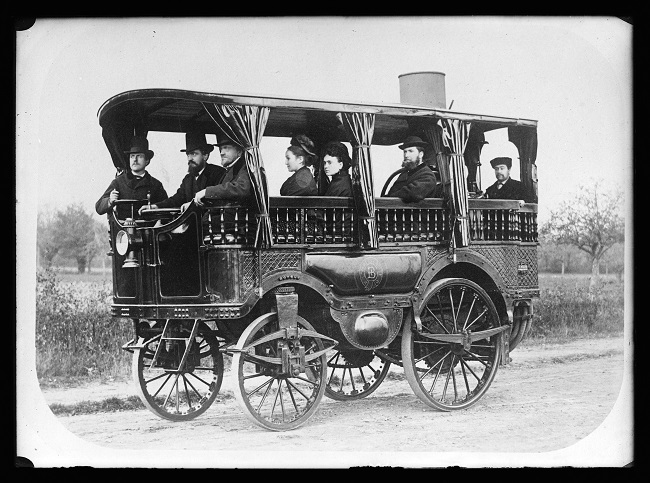Amédée Bollée, from Bell-Maker to Car Creator

Le Mans’ 24H race celebrates its 100th anniversary but there wouldn’t be a ‘Le Mans’ without Amédée Bollée, inventor of l’Obéissante, the ancestor of automobiles.
The history of the famous Le Mans race is entwined with the history of the automobile industry, which brings you to bell-maker Amédée Bollée, who moved to Le Mans in 1842 to start work on creating a steam-powered carriage, a hobby he hoped to come to fruition.
One year later he built the Obéissante, meaning obedient, a car which could carry 12 people and the very first road-going, steam-powered vehicle. The ease in which the locomobile, compared with its contemporaries could be driven was stark and, whilst weighing 4 tons, it could reach a speed of 40km/h on level ground. Due to its gear shift, it could climb a 12% hill at low speed.

Le Mans Classic, held on the grounds of the 24h du Mans race © Pierre Jean Durieu / shutterstock
Automotive fame
On the 9th of October in 1875, he put the avant-garde car to test and it passed by successfully going from Le Mans to Paris in eighteen hours. Before doing it, he needed to go through numerous administrative procedures and it was the Minister of Public Works, Eugène Caillaux, who gave his approval on the 26th of August 1875. Although Bollée picked up 75 fines, he won his bet!
Off the back of this, anyone wanting to make a career or fame in the automobile industry flocked to Le Mans and of course, that is still the case today. In 1895 the ACF was created; The Automobile Club of France and around eleven years later, the Club licensed Sarthe, the department that Le Mans is within, to hold a ‘Grand Prix’ race, which marked the beginning of what we now know as Formula 1.
From the event, ideas to hold an annual race began, though not just a race testing speed but to test endurance too. The idea of a 24h race was ignited and happened; 33 cars embarked on a 17-km circuit on the May 26th, 1923, outside of Le Mans.

This year’s 24h du Mans race will celebrate its 100 years of existence © Jens Mommens / shutterstock
The birth of Le Mans’ 24H race
The relationship between Bollée and the race is ever-present in Le Mans and the dedicated Le Mans race themed map distributed throughout the event marks the Bollée residence stating ‘Amédée Bollée, a bellfounder by trade, invented the first steam-powered mechanically propelled vehicle capable of transporting 12 passengers, known as the Obéissante. This invention, considered to be the forerunner of the private car, was built on Avenue de Paris, the most prominent avenue in the city, now known as Avenue Bollée. For many years, the Bollée family lived in a brick house featuring a polychrome glaze decoration. It still has the outbuilding used to house the steam-powered car, and thus deemed to be the first private automobile garage in the world!’.
Not only did he inspire Le Mans race, but also his own offspring into the world of cars with both his sons Léon Bollée and Amédée-Ernest-Marie becoming automobile manufacturers. The Bollée family built cars until 1931 and nine models are on show at the 24 Hours of Le Mans Museum, including La Man- celle, the first car put into series production. To this day, after farming, the car industry is the second largest employment sector in the region and almost everyone has heard of 24 Hours of Le Mans.
Lead photo credit : L'Obeissante, the first steam-powered automobile, invented by Amédée Bollée
Share to: Facebook Twitter LinkedIn Email
More in cars, French history, Le Mans, Le Mans race
Leave a reply
Your email address will not be published. Required fields are marked *



